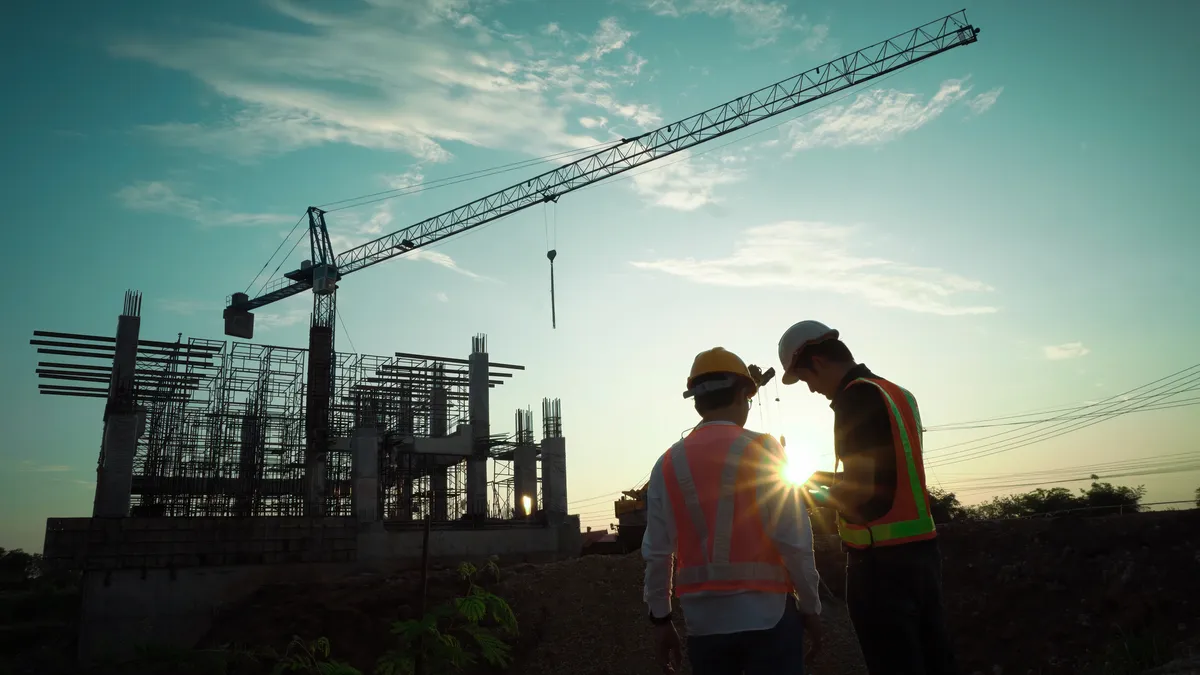Despite news that cities are growing in popularity for homebuyers, a report released Wednesday showed that the suburbs are still the top desired destination for future movers.
The Demand Institute, a nonprofit think tank that focuses on evolving consumer demand, released a report titled “Location Matters: Where America is Moving.” The report found that, unsurprisingly, 75% of people moving homes attributed location-related reasons for their move. Within those reasons, though, are varying desires and motivations.
Jeremy Burbank, the vice president of the Demand Institute, told Construction Dive: “Location continues to be one of the key factors when one moves. Most tell us it’s as important, or more important, than the actual home itself.”
The New York-based institute surveyed more than 10,000 households across the country about their current living situation as well as what matters most to them in a home and community. The results include only existing households and do not reflect new ones among young adults.
Where and why
The top reasons related to location people listed for moving were: safer neighborhoods at 30%, closer to family at 27%, change of climate at 26%, closer to work at 25%, and for a new job at 23%.
The report also found that if people do choose to move, they’re not going far. 74% said they are staying in state, and 59% are staying within 30 miles of their current homes.
The percentage of people moving out of state has decreased 30% since 2000, according to the Demand Institute. Burbank attributes this drop to structural changes in labor markets. He explained that the job force requires less geographic specialization. Advertisers, for example, can do their work almost anywhere in the country. Additionally, more people are working from home.
Burbank added: “Another factor has been the overall economic melee following the financial crisis. It made it more difficult for people to move, and for people to move long distances. If you owned a home, it would be more difficult to relocate elsewhere. If you moved, you wouldn’t be certain you’d get a job when you got there.”
The report also addressed the likely destinations for movers in America. Continuing current trends, movers will keep flocking to the western and southern U.S. for the most common reasons of a change of climate and retirement. The West will gain the most people relocating, with 6%, and the South will gain 2%.
The report offered good news for cities, where 3% more people reported moving to than in 2000. These metropolitan areas include both urban and suburban neighborhoods. Rural areas haven’t fared as well, as the number of people living in them has continued to slowly decline since 1990. The increase of city dwellers could be attributed to the greater number of Americans choosing to rent rather than buy homes. The U.S. has added more than 5 million renting households since 2006.
Staying in the suburbs
In the future, however, more people reported wanting to move away from city centers and closer to the suburbs. Most movers said they currently live in the suburbs, and that they want to remain in them. These people indicated they will be moving farther from the city, rather than closer, to have better access to safer neighborhoods and larger, affordable houses.
Burbank said the aspect of the study that surprised him the most was the “resilience of suburban demand.”
“We’ve heard a lot about how people, particularly younger people, want to live in the city. While city centers have done well in recent years, most Americans still live in the suburbs, and that’s where they plan to move,” he said.
Within the question of neighborhoods, 83% of people named safe neighborhoods as the most important characteristic, 70% said quiet neighborhoods, and 67% said well-kept ones. Despite this almost universal desire for improved neighborhood safety, 21% of respondents said they believe their neighborhoods have become less safe in recent years.
Burbank said he found the discontent with neighborhood safety to be another surprising result of the survey, especially considering the fact that crime rates continue to decline. “Knowing how much the incidence of crime has fallen, you would not expect this necessarily to be as big of an unmet need for Americans as it actually is,” he said.
As one would guess, besides safety, other preferences related to location vary depending on the person’s work and family situation. People with children, for example, cared most about high quality schools nearby. Others were most concerned with the proximity to their jobs. And some wanted to make sure they could walk to local amenities and transportation.
Walkability matters
The report also described transportation trends in different locations. Cars continue to lead the transportation pack by a large margin as the most common mode of transportation in rural, suburban and urban areas. Public transit is most common in urban areas.
However, almost half of Americans said that at least once a month, they walk to places within their community. Most movers said they desire a grocery store and healthcare services within a short drive of their new home, and many want parks and green space within walking distance.
The walkability of a community could benefit the residents and real estate market alike. Places with a higher walkability reported stronger expected price growth and an improved quality of life for residents.
Burbank said: “I think that’s how you’ll start to see the suburbs evolving. Instead of having to drive everywhere, you’ll see amenities within a short walk. It’s all about balance. Consumers still value space and privacy.”
Takeaways for the future
Overall, the Demand Institute’s report offers a glimpse into what matters to the future homebuyer. The suburbs will remain strong, and people will continue to place safety as a paramount concern. The role of millennials is a current hot-button issue in the housing industry. Burbank asked the common concern: “What are millennials looking to do? Are they purchasing homes? Will they want to live in single-family homes in the suburbs?”
According to Burbank and the report, the answer to that is yes.
















